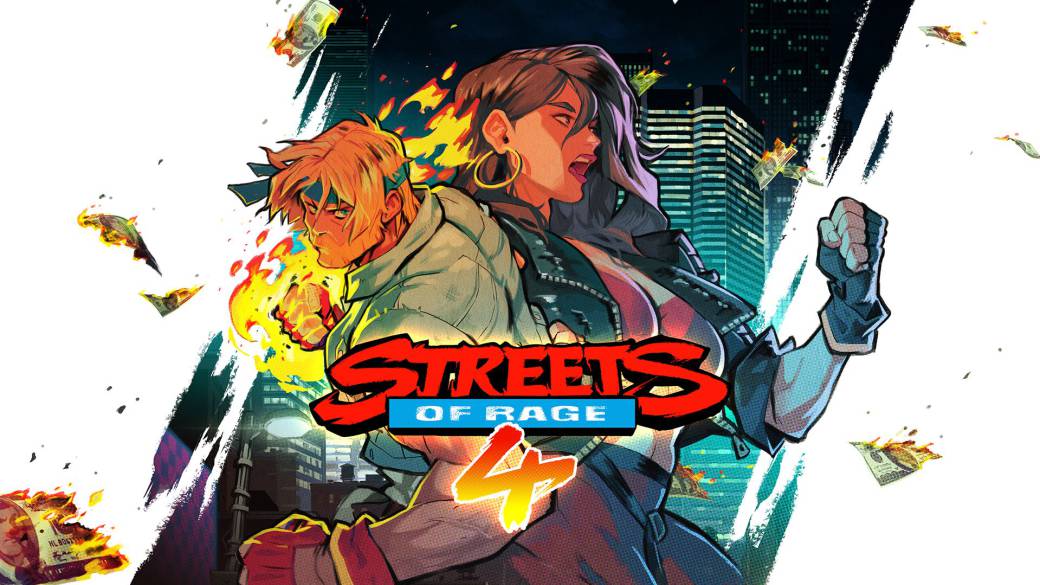
We play the long-awaited return of an unquestionable 16-bit classic, one of the best Beat'em Ups ever, can it measure up?
Classic Beat’em Up is a simple genre, with a very precise way of doing things. Other genres are as recognizable today as they were yesterday, despite the enormous advance in technology, such as fighting games, for example, but street fighting games were forgotten once developers were able to create wider 3D worlds, leaving them as something very specific to a specific time. For years they practically disappeared, giving way to action games of different kinds, from the most technical ones like Devil May Cry or Ninja Gaiden, to the most cathartic ones like the musou.
Fortunately, nostalgia is a powerful ally and has not let the classic formula completely fall into oblivion. George Kamitani presented us with Dragon’s Crown, a tribute to the excellent work he already did at Capcom with the Tower of Doom / Shadow over Mystara (by the way, one of the most interesting evolutions in the genre); Scott Pilgrim Vs The World was another fantastic modern example, with memorable graphics and soundtrack – a real tragedy that by legal rights is not available to buy. Capcom reissued his best works in the genre with the Beat’em Up bundle, including the first domestic version of that gem called Battle Circuit. And there are a number of regular indie productions that show that this particular structure of creating action games has not been forgotten, with names like Mother Russia Bleeds or the excellent Fight N ’Rage. Not to mention the phenomenon of Dungeon Fighters Online, one of the most popular games in the world.
But the return of Street of Rage are bigger words. We are talking about some of the most important references in the genre, a key game on Mega Drive to compete with the arrival of Final Fight at Super Nintendo and one of those rare games that managed to make us forget the arcade games, especially that fantastic second installment in which You could see what the 16-bit Mega Drive was capable of, a whole audiovisual festival that marked the zenith of an outstanding trilogy with a high sentimental value for thousands of players for the memorable moments, its characters and, above all, everything, his music.
A tribute to Street of Rage
When an external study takes care of the continuation of a beloved name, there is always a first reaction of doubt, where the credentials of those who are going to order are looked at with a magnifying glass to try to anticipate if they will measure up. Few things are as sad in the video game as taking an abandoned cult saga and resuming it to make a mediocre or directly poor delivery, so it is normal that the fan's guard is always high. In the case of Streets of Rage IV, apart from Sega's obvious blessing, we find a three-way development between Dotemu as a producer, and joint work between Lizardcube (Wonderboy: The Dragon's Trap) and Guard Crush Games, an independent studio that He had developed a modern Beat'em Up called Streets of Fury that did not inspire great reactions in his day – partly due to his humorous approach and the use of digitized real actors.
It was not exactly a composition capable of erasing all doubts, especially without the soul of the saga, Yuzo Koshiro, his sister Ayano, Motohorio Kawashima or any member of Ancient – a study that is still active by the way, although obviously not at the level of the glorious times of Beyond Oasis, Actraiser or the Streets of Rage itself-. Wonderboy was the great cover letter, but no one escaped that, first, it was a remake of Wonder Boy in Monster land, and second, it had the full collaboration from the start of its original designer, Ryuichi Nishizawa. The jump from that to creating a Streets of Rage sequel 26 years after the third part, considering its history in the genre and its crucial role in the 16-bit era, and also with no one from Ancient on the team, was more how considerable.
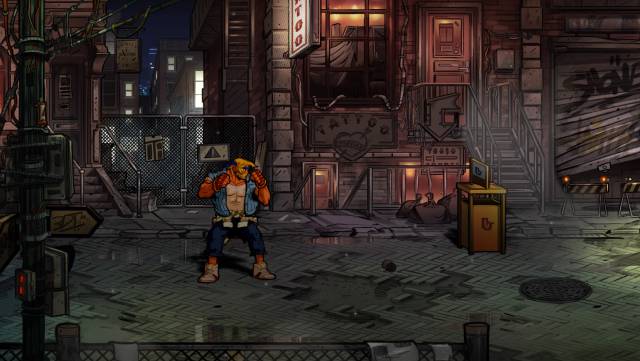
The good news is that the studio team has triumphed and demonstrated not only its competence, but also its love for the saga, its attention to detail and its ability to honor a classic while not letting itself be chained by staying too faithful. to the original. It is, clearly, a traditional Beat'em Up with all the ones of the law and there are enough elements in its mechanics to maintain the link of union with the originals, but at the same time it finds its own rhythm and ideas when considering the fight , achieving that it is not a revival of the past.
Furthermore, the studio not only managed to convince Sega with their passion and presentation, it was also able to convince Koshiro himself and Kawashima to participate in the game with some compositions – along with an authentic dream team of legendary musicians such as Yoko Shimomura, Harumi Fujita or Keiji Yamagishi, who contribute their own themes for the different bosses, while Olivier Deriviere serves as the main composer, with Cyrile Imbert harmonizing the entire cast and adding his personal touch. The fact that Koshiro accepted the role of collaborator in a quarter of a saga that is clearly his, is representative of both the good work of Dotemu and Lizardcube and the greatness and humility of the legendary composer, who has created several highly representative themes. such as the intro, the selection of characters and various high-level themes scattered throughout the game, some with the necessary nostalgic touch to the rhythm of the synthesizer.
Back to the streets
Ten years have passed since Streets of Rage, Mr X's union has disappeared and peace reigns in the streets of the city… until a new organization appears to wreak havoc and destruction. Mr and Mrs Y, the villain's twin sons, have rebuilt their father's empire and are set to take control, forcing Axel and Blaze to abandon their retirement and resume their role as street watchers. They are accompanied by Cherry Hunter, the daughter of Alex Hunter, and Floyd Iraia, an apprentice to Dr Zan who was part of the cast of fighters of the third installment. The squad is complete due to the return of Alex Hunter himself, who had not actively participated since the first installment and represents another nostalgic touch that is more than pleasant, although it will not be the last.
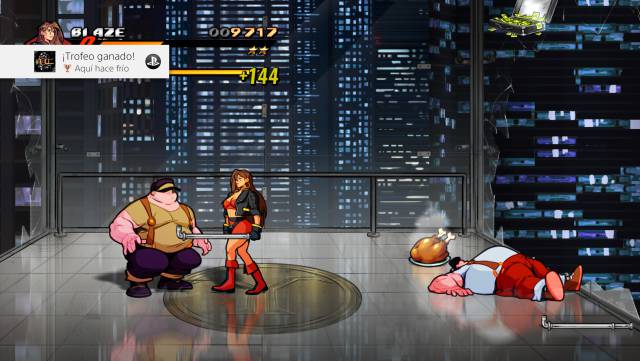
There are no major complaints about the template. There are no surveys on the popularity of Roo, the kangaroo that could be unlocked in the third installment, but it can be agreed that it was an extravagant option that contributed to the perception of tres as the "rare" family. Perhaps a pure crawler is missing, more in the style of Max, a role that should be played by Floyd but that remains somewhat halfway – there would have been some special movement of grip more spectacular in the line of Max's Atomic Drop, since the double key of Floyd does not look the same. And the truth is that a skater like Eddie is especially missing, who after two installments of co-protagonist disappears from the face of the earth, when he was already an established part of the saga -in fact in the game documents he You can see that there were plans for a skater fighter, which was eventually scrapped.
Amano Koshiro commented in his day that the choice of protagonists in the Streets of Rage was determined by what was "cool" at the time. That is why in the second part Adam was relegated to the role of kidnapped, because he had nothing too differential with respect to Axel and opted for a skater and a wrestler, two things that were in full swing then, just as Blaze was a loving dancer of lambada because it was the catchy song of the time and, we suppose, that kangaroos and cyborgs were popular at the time of conceiving the third installment. The choice of characters in Streets of Rage 4 seems rather conceived of the legacy of the saga itself, making it an appropriate choice.
Successful redesign
Although there were some reservations when the game was first shown, the truth is that the careful work of the studio in recovering the iconic characters for a modern game cannot be denied. It could be argued that there were modern approaches using pixelart that would have been more consistent with the visual legacy of the original trilogy, but that would be to ignore the Lizardcube's own strengths, which in Wonderboy was characterized by the beautiful cartoon aesthetic that is born out of Ben's vision. Fiquet as artistic director, among other functions.
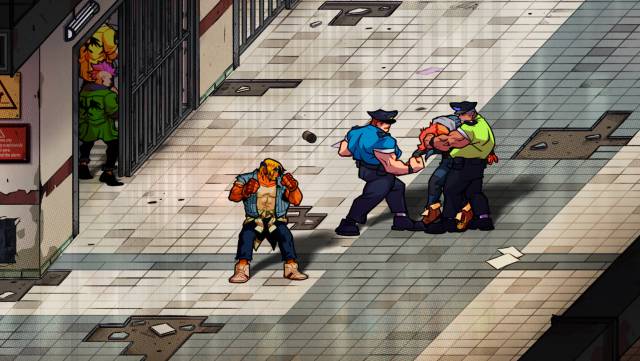
The greatest balancing act between the new and the old is mostly represented in Axel and Blaze, whose appearance has been meticulously taken care of to be recognizable in a new style and with 10 more years on top. With Adam there was more freedom since he did not appear from the first part and he did not have a look of his own, but all the considerations that have been taken to represent the returning characters are appreciated. In the game there are, among the extras, sketch sheets of the different redesigns of the characters and you can see the delicate balance between incorporating iconic elements from the past, incorporating new ones and doing it in a way that is consistent with the detailed animation work. and the combat system – it is not the same to draw a very elaborate and detailed jacket than to make 1000 animation frames considering how it has to move.
Continuing with the graphic section, the 12 phases of which the game is composed manage to maintain the urban spirit of Streets of Rage with aplomb. Although during the trilogy we visited all kinds of locations, some somewhat outlandish, the saga is indelibly associated with a great city and its darkest corners. The studio has managed to capture that essence through sections that preserve the iconic multidirectional scroll that began to be used in the second part and with backgrounds that reflect the activity of a city that never sleeps, with graffiti-painted walls, places with people from outside the city. fire in the streets, and trains that pass leaving only the trembling of the tracks above our heads.
Fire in the fists
A characteristic characteristic of Streets of Rage and that differentiates it from many Beat'em Ups of its time is the fact that it is a game that was born on console, unusual in front of a majority that came as recreational conversions, games always in a hurry to convince yourself to throw the coin and even more quickly so that you could throw another one or leave the furniture free for the next one. Sega needed a game to compete with the Final Fight bombshell for Super Nintendo as an exclusive console, and Ancient responded with a title of its own personality, framed in the canons of the genre and with special relevance to the collaborative factor, but with a different rhythm, more leisurely and methodical, with a key variant in positioning such as the key jump to change the orientation of our character, giving us more control on the ground, among other details.
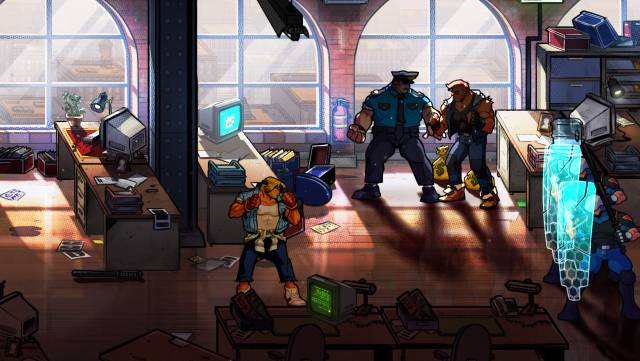
The challenge with the fourth part was to respect that essence, as well as the growing arsenal of movements that came with the two subsequent installments, but to do it in a way that was not derivative or boring. Radically changing something that works has its risks, but not doing it after 26 years is not to be applauded either and the team has solved the challenge with a note. The main innovations have to do with the rebound mechanics in bodies and objects, absolutely key to the game system and connected to the combos mechanics, which clearly sets the pace of the combat. Basically, the normal thing in the saga when you throw an enemy off the edge of the screen is that it stays out of our reach and we have to wait until it appears. In Streets of Rage, falls and throws against the edges cause the body to “bounce”, so you can chain a sequence of blows, make the opponent bounce with the edge, and continue attacking him as he falls, so that we can reach sequences higher.
This has other repercussions. For example, now the weapons we collect from the ground, when thrown, bounce when they hit our rivals. If we measure well, we will be able to retrieve the weapon mid-fall and reuse it quickly, generating a very Hong Kong martial arts movie dynamic, with very satisfying moments of stringing strikes if we have enough skill. Here you are encouraged to keep the combo through two rewards systems: higher number, higher score and faster achievement of life, in addition to improving our final score, which affects how quickly we unlock the extras on a global scale. The combo is "redeemed", so to speak, when you haven't hit anything for a while, but keep in mind that it is lost if an enemy hits you. This is combined with the fact that the special movement system does not simply consume life this time, but rather spends a portion of life in a shaded form, which we can regenerate if we execute normal blows. The result is addictive, since we will always be looking to keep the combo as high as possible and making generous use of the special blows to then regenerate life with alternating normal attacks, but always with the fear in the body that the slightest blow can ruin our score and our life bar. It's a great system and hard to get tired of, making it ideal for a title designed to be replayed.
The characters have a varied arsenal of punches and personal movements and even recovers the limited special hit – which in Streets of Rage became the always remembered police car with the bazooka agent. For every star we have, characters can use a devastating move, joining the variety of defensive and offensive specials available, as well as normal combos, quick hits to the back, and keys – including the must-have air transition in the case of the three primal protagonists. Floyd and Cherry offer other styles, opening the range of options somewhat – which then opens up even more when the extras begin to be unlocked.
Loaded with extras and game modes

The primary mode of the game is story mode. Every time we complete a phase it will be overcome and we will start from the next one, which makes the process of reaching the end more affordable for most players. The usual limited continuation system in 16-bit games would mean exposing players to the classic frustration of seeing how they run out of lives when they are about to reach the end, having to repeat the game from the beginning, something that has been decided not to include by default, surely with good judgment. Instead, every time we run out of lives in a phase we will start it from the beginning, although with the possibility of changing the character if we want and even accessing a help system that will increase our lives and numbers of special objects – at the cost of a lower score.
Once the story mode is complete the whole game will open before us. We will access the maximum level of difficulty, Mania, and we will be able to enter the Battle modes (which previously would be the duel mode), Boss Combat, Arcade and Level Selection, as well as go back to the story mode with other characters or in new levels of difficulty. One of the most curious is the Arcade mode: complete the 12 phases in a row, with a single character and without any continuation (basically what would be the challenge known as 1cc, complete the game with a single "coin", very common in game Arcadian). Depending on what we are doing, we will accumulate scores on a global scale and unlock rewards, which include being able to play with the original soundtracks of the first and second games, or unlocking the original Megadrive as playable fighters (with their pixels and everything, offering a curious show of contrast with normal graphics).
A tribute full of love
The detail of including the shape of the original characters is one of the many winks that Streets of Rage 4 has for the trilogy that gives it its reason for being. It is hilarious to find all the Easter eggs, the references and the elements of the decoration that are put there to provoke the smile of the fan. We do not want to spoil the surprise and we will let the player himself look for them, but we will not stop applauding the attention that has been paid to these elements, both static and playable, that clearly demonstrate the affection that has been put into the game. The truth is that it is worth to continue playing once the story is completed to continue finding references and unlocking rewards, which contributes to it being a game with such a grateful combat system and a good scale of difficulty according to the chosen mode.
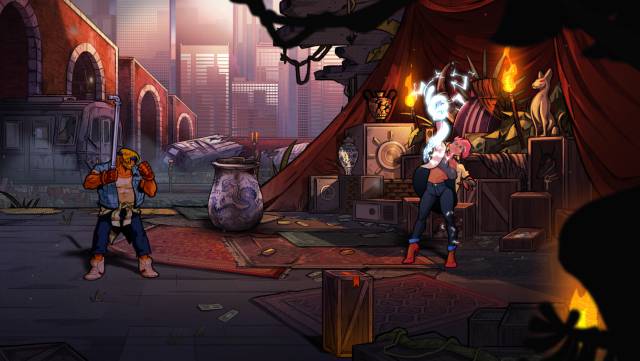
A soundtrack to match
We've already mentioned the impressive list of names that are part of the game's soundtrack. Can this Dream Team compete with what would be a pure Yoshiro and Kawashima soundtrack? Hard to say, there is an overly powerful nostalgic component to some of the themes in the original trilogy and then there is the fact that it is difficult to compare the sound of the Yamaha YM2612 from Mega Drive with the absence of today's limits to using music. in a video game. From a writer's personal point of view, the Streets of Rage 4 soundtrack is of a high standard, with excellent themes and a good balance between familiar and novel sounds, but it cannot compete with the impact of the original sound playing on the 16 bits of Sega. We certainly prefer this soundtrack to that of Streets of Rage 3, where Yoshiro got a little out of touch with the Detroit sound, but we can't give it the same strength and originality that the trilogy once had as a whole. In any case, the fundamental thing is that the importance of the soundtrack has been recognized as a fundamental element to give soul to a Streets of Rage, and we have been allowed to listen to great songs by legendary composers at the service of the punches of Axel and company We can't ask for much more.
The distance of an era
There are elements with which we wonder if, in other circumstances, with another budget, it could not have gone further. The original Streets of Rage were "AAA" of the time, great strategic productions for Sega -at least the first two-, the second part is easily a top 10 in the console catalog, and a game celebrated for breaking the border like few others. between the arcade and the domestic machine. What would the modern equivalent of that look like? What would a Streets of Rage 4 look like on a Yakuza budget? Surely it would be more luxurious, it would have more models of enemies, it would not repeat so many bosses and deputy bosses, perhaps you would have alternative routes like the (fantastic) remake created by fans …
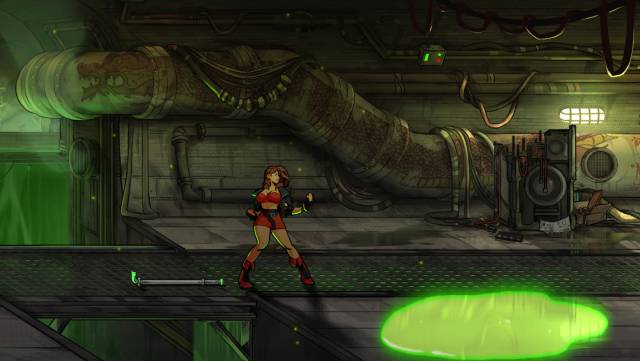
In the past, the number of unique characters and final bosses was limited by the precious and expensive memory, so it was necessary to resort to aided techniques such as changing the color palette and some improvement in their characteristics to escalate the difficulty of the enemies . Today, there are no such limitations, but there are still limits on the amount of production that a small studio (or three) can develop during a specific period of time and that is understandable. There is no fault in the effort made in the game produced by DotEmu and the studies involved, the amount and quality of the effort is generous with the money he asks for in exchange, but during our games, especially at the times when we miss something variety in our opponents, we do not resist dreaming a bit of a game that went further. But that would require living in a time when the traditional Beat’em Up had the commercial vigor of yesteryear, something that does not seem likely to happen, but what we can dream of.
CONCLUSION
We are facing a great modern Beat'em Up, which collects, respects and pays homage to the legacy of the trilogy that gives it its name and recognition, so that in itself is a triumph that we celebrate from these lines and allows us to recommend the game so much. lovers of originals and those interested in action games. Its combat system is a great success that innovates on the original basis, the graphic and artistic work is commendable, the love for the heritage of the trilogy overflows from all four sides and the soundtrack fulfills the almost impossible task of being at the height of a game that marked a generation with its music. It would be unreasonable to ask for more, and only from a love that does not fade due to gender, we dare to ask that we try again in a while, that there is a Streets of Rage V that is what the second installment went to first. A dream? Perhaps, but while we will give thanks for this care and unexpected return that, we wish, rekindle the flame of the street fight.
THE BEST
- A great tribute to the entire Streets of Rage saga
- A sublime soundtrack
- Combat system that is hard to get tired of
- Good amount of phases and game modes
- Great job with redesigns and graphics in general
WORST
- Excessive repetition of some bosses and deputy bosses
- Lack of charisma and presence in some main villains
Very good
Game with a remarkable finish that we will enjoy and remember. A good purchase, highly recommended for lovers of the genre. It is well cared for at all levels.
